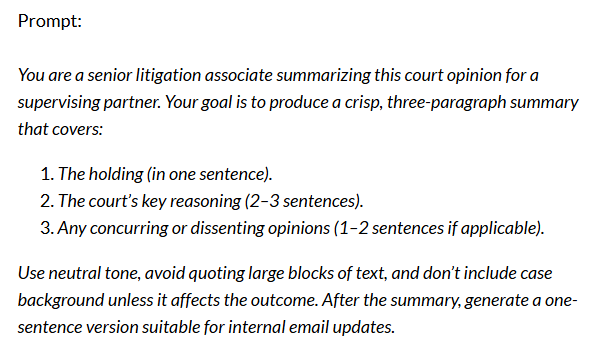
Law professor @BoydLawUNLV. Writing trainer. Co-founder at https://t.co/rxYkta8kzW. Author of Level Up Your Legal Writing.
2 subscribers
How to get URL link on X (Twitter) App































 To celebrate the upcoming launch of Write.law's new AI legal writing practice, we had our team work with GPT to write a motion from start to finish.
To celebrate the upcoming launch of Write.law's new AI legal writing practice, we had our team work with GPT to write a motion from start to finish. 




